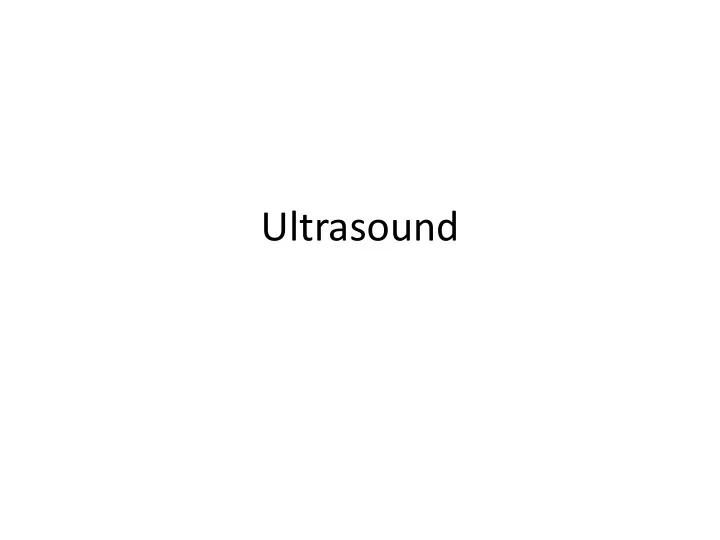

Ultrasound
Ultrasound • Ultrasound imaging uses high frequency sound waves beyond the range of human hearing to generate images within objects of interest
Ultrasound • Among the most popular imaging modalities – Safe – Real-time – Relatively more portable than MRI, CT, X-ray • Today, medical ultrasound has become a predominant tool for diagnostic medicine with 159 million exams given annually in the U.S.A., and 250 million worldwide, which is over 72 million exams greater than the next oft used modality (X-ray computed tomography (CT)) in the U.S.A. and over 200% greater than CT exams done worldwide) • Benefits – No ionizing radiation from X-rays or radioactive isotopes – Ability to do real-time 2D and 3D imaging that other modalities • Challenges – Image quality and diagnosis is highly sensitive to the ability and experience of the operator.
Ultrasound imaging • Based on the pulse-echo and doppler concepts • A discrete pulse is sent into the object of interest by a ultrasound transducer that is composed of a piezoelectric material that is excited by a electrical high voltage (HV) pulser. • Once a pulsing pattern has been sent the transducer switches from transmit to receive mode and waits over a preset period for return echoes. • In pulse-echo imaging , the returning echo’s amplitude represents the presence or absence of an object at a given position. • With a longer period more depth is interrogated as the furthest return echoes will have a chance to be received.
Receiver Operation • The echoes are received by the transducer and converted from sound energy into electrical pulses • The return echo signals are amplified depending on the amount of time elapsed since the transducer sent the initial pulse. • A longer delay means the echo signal has traversed more distance and has thus lost an exponential amount of sound energy. • The signal is recovered through a time gain compensation (TGC) implemented with a variable gain amplifier (VGA). These are all part of the receive AFE (Rx AFE) • The analog signals are then converted by an analog-to-digital converter (ADC) into digital samples where further processing is handled by a DSP before the data is displayable as an image or video.
Major components 1) Analog Front-end (AFE), 2) Digital Front-end 3) Digital Mid-end 4) Digital Back-end
Mid-end processing
Windowing • a window function is a mathematical function that is zero- valued outside of some choseninterval. For instance, a function that is constant inside the interval and zero elsewhere is called a rectangular window, which describes the shape of its graphical representation.
Hamming Window The window is optimized to minimize the maximum (nearest) side lobe, giving it a height of about one-fifth that of the Hann window, a raised cosine with simpler coefficients.
Recommend
More recommend